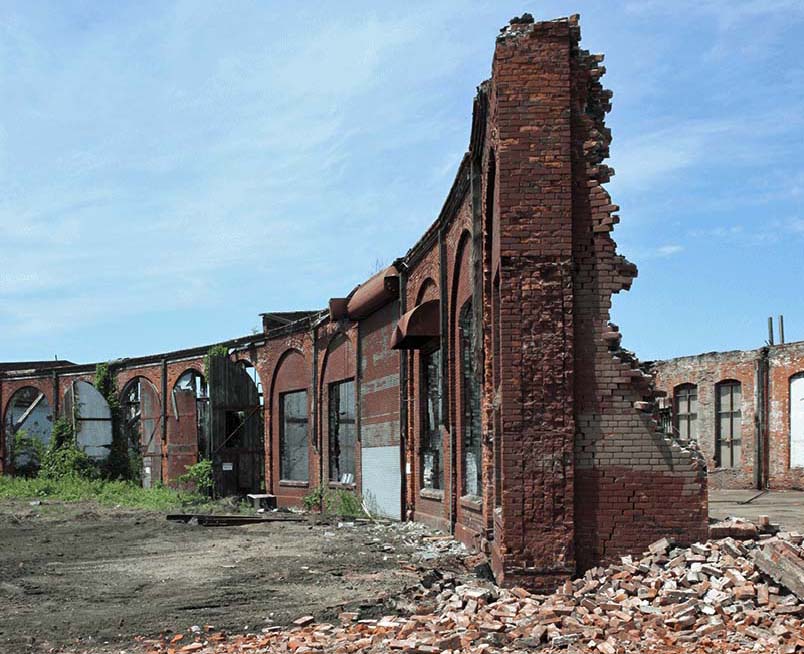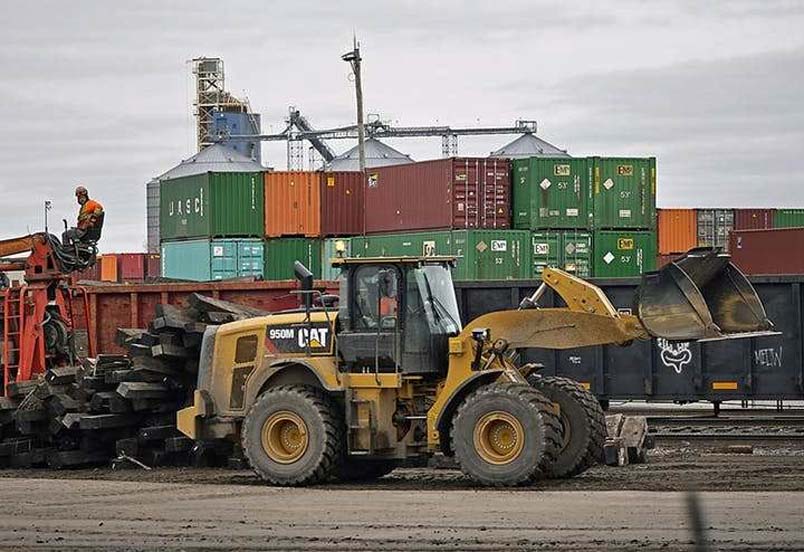
Minneapolis Minnesota USA - Northeast Minneapolis residents had big dreams for the prime land on the southeast corner of the Shoreham
Yards railroad terminal, new businesses, maybe a brewery, or even a velodrome for indoor cycling.
The site, once home to a historic roundhouse used to store steam locomotives, was a desirable redevelopment target for two decades.
But now Canadian Pacific Railway (CP), which owns the 230 acre facility, has taken it off the market, moved forward with its own expansion, and demolished the
roundhouse to make room for storage space for empty shipping containers.

The moves caught elected officials and neighbors by surprise, and some have launched an effort to stop the redevelopment, or at least make it more
appealing.
They worry it will bring increased traffic along Central Avenue, increase air pollution, and just be an eyesore when viewed from surrounding homes and
businesses.
City Council Member Kevin Reich said it's the latest example of an "uneven relationship" between the city and the railroad behemoth, which runs
tracks along the U.S.-Canada border.
The company cited federal rules allowing it to tear down the roundhouse, Reich said, and to recently settle a lawsuit preventing the city from enforcing its
sick and safe time policy on railroad employees.
"They are not cooperative with this community, and this is just the latest, probably most egregious, example of that," said Gayle Bonneville, who has
lived near the rail yard for more than two decades.
She worked to preserve the roundhouse and only learned it had been demolished through the Northeaster community newspaper this summer.
"Central Avenue is our main street, and now it's going to be a blighted industrial park."
CP media relations manager Andy Cummings said about 12 acres will be redeveloped by next year.
The existing terminal is at capacity and the rail yard needs more space, he said.
Shipping containers and a new track for loading them will be placed along Central Avenue by 29th Avenue Northeast, where the company has already begun work on
a second entrance.
"Shoreham has been a railroad facility for more than a century, and CP is performing this upgrade to meet the demands of the 21st century Upper Midwestern
economy," he said.
A Site with History
Dozens of neighbors attended a meeting last month organized by state Sen. Kari Dziedzic, who represents the area, to learn more from CP, state, and local
officials.
The railroad has used Shoreham Yards since the 1880s for train, trucking, and bulk distribution.
Beeping, clanking, and low rumbling sounds rise from inside the sprawling site, dozens of shipping containers are stacked high along St. Anthony Parkway, which
separates it from the Columbia Golf Club.
Businesses and community members had been interested in redeveloping the southeast corner of the site since the late 1990s, Reich said.
However, soil and groundwater contamination from past chemical and petroleum storage put proposals on hold, and CP worked with the Minnesota Pollution Control
Agency on cleanup efforts.
Unsuitable for Preservation
The city learned the railroad would be demolishing the roundhouse on the corner this summer, Reich said.
The railroad argued federal rights pre-empted the city's historic designation, he said.
"While CP recognizes and appreciates the role the roundhouse and its workers played in the company's history, the building was not needed for current or
future operations and was in a dilapidated, unsafe, condition, making it unsuitable for preservation or reuse," Cummings said.
Crews have excavated and treated the soil where the roundhouse once stood, spraying water throughout to reduce dust, he added.
The expansion means shipping containers will be visible along an active stretch of Central Avenue.
More trucks are also expected to come in and out of the facility, Dziedzic was told it could be up to double the existing traffic.
For those driving along Central, or frequenting the several businesses that line the avenue, the containers will "just be a symbol of a missed
opportunity," Reich said.
"The real loss is the opportunity loss, what could've been," said Reich, who has represented northeast Minneapolis since 2010.
"They could've been a loved, signature, destination, versus just a ho-hum expansion of an existing operation."
Neighborhood Reacts
Brian Rice, an attorney and lobbyist who lives in the Audubon Park neighborhood just east of Shoreham Yards, attended the neighborhood meeting and was shocked
to learn about the expansion, which he described as "basically creating a massive parking lot for empty containers."
He is passing around a petition for the Minnesota Environmental Quality Board to conduct an environmental review of the project.
"This just is not right," he said.
"And quite frankly, Northeast and the community needs someone to step up and fight this."
Others are trying to see what they can do to lessen the effect the expansion will have on the neighborhood.
Artist Gudrun Lock lives at the southern border of Shoreham Yards along 27th Avenue Northeast.
A community garden and playground line that border, where she brings her children and walks her dog.
She is working with the Weisman Art Museum on an idea for a barrier between the rail yard and Central Avenue consisting of evergreen trees and other vegetation
that could block pollution and keep containers out of sight.
"We can complain and be upset about this stuff, which is reasonable, but to think of some sort of solution requires a certain way of seeing things,"
she said.
Looking forward, Reich wants to explore community uses for the rest of the yard's eastern border, and a more collaborative relationship with CP.
"We will certainly try to hold the line as best we can," he said.
Miguel Otarola.
provisions in Section 29 of the Canadian
Copyright Modernization Act.

